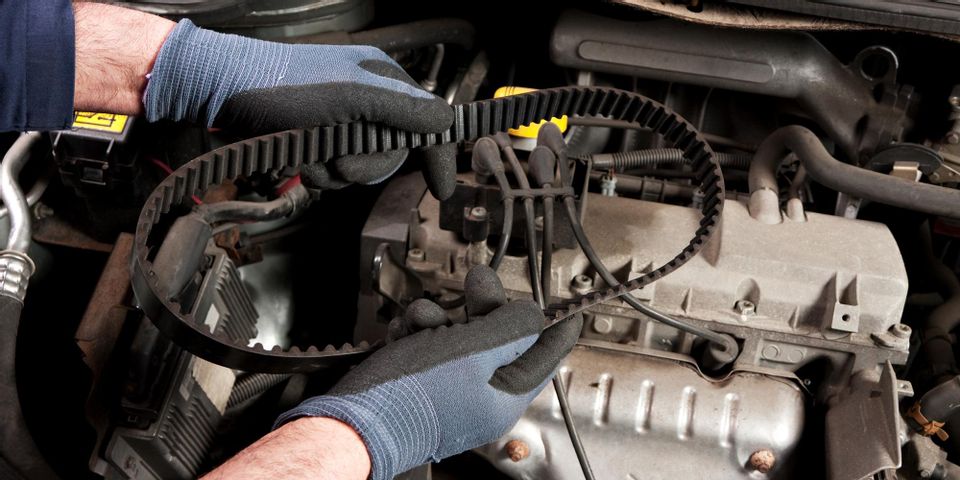An Introduction to the Timing Belt

Car engines are intricate pieces of machinery that rely on parts moving in sync. The timing belt is one piece that helps keep the engine working smoothly. Learn why it’s so important to your engine and how you can ensure it’s in good condition.
What Is a Timing Belt?
The timing belt is a rubber belt with hard teeth that connects the crankshaft and camshafts. These shafts are responsible for opening and closing the engine intake and exhaust valves, which must work in sync to keep the fuel and air mixture at the right levels.
If the fuel and air mixture is not right, it can lead to power loss. At worst, the valves controlled by the timing belt will run into each other, leading to bent valves or even shaft damage. These auto repairs can be costly.
How Do You Inspect the Belt?
 On most cars, you can find the belt by removing the plastic timing cover on the front of the engine. You may have to look in your car’s manual to find the exact location.
On most cars, you can find the belt by removing the plastic timing cover on the front of the engine. You may have to look in your car’s manual to find the exact location.
Once you’ve located the belt, inspect the outside for cracks. One or two cracks in the outer coating are acceptable, but if chunks are missing or there are many cracks, it’s time to replace the belt.
Also, tilt the belt to inspect the teeth. Even one broken or missing tooth can cause the belt to pop off, resulting in engine damage.
Perform this inspection every 10,000 miles, and replace your timing belt according to your car manufacturer’s instructions.
When it’s time to replace your timing belt, head to Dee’s Auto Care Specialists in the Coulee Region, MN. This one-stop-shop can handle all your auto maintenance needs, whether you need new tires, brakes, or an oil change. With an ASE®-certified crew of skilled technicians and a continuing education program to stay up-to-date on the latest technologies, they provide quality service. Reach out to them online or call them at (608) 782-2530 to make an appointment.
About the Business
(2 reviews)
Have a question? Ask the experts!
Send your question

